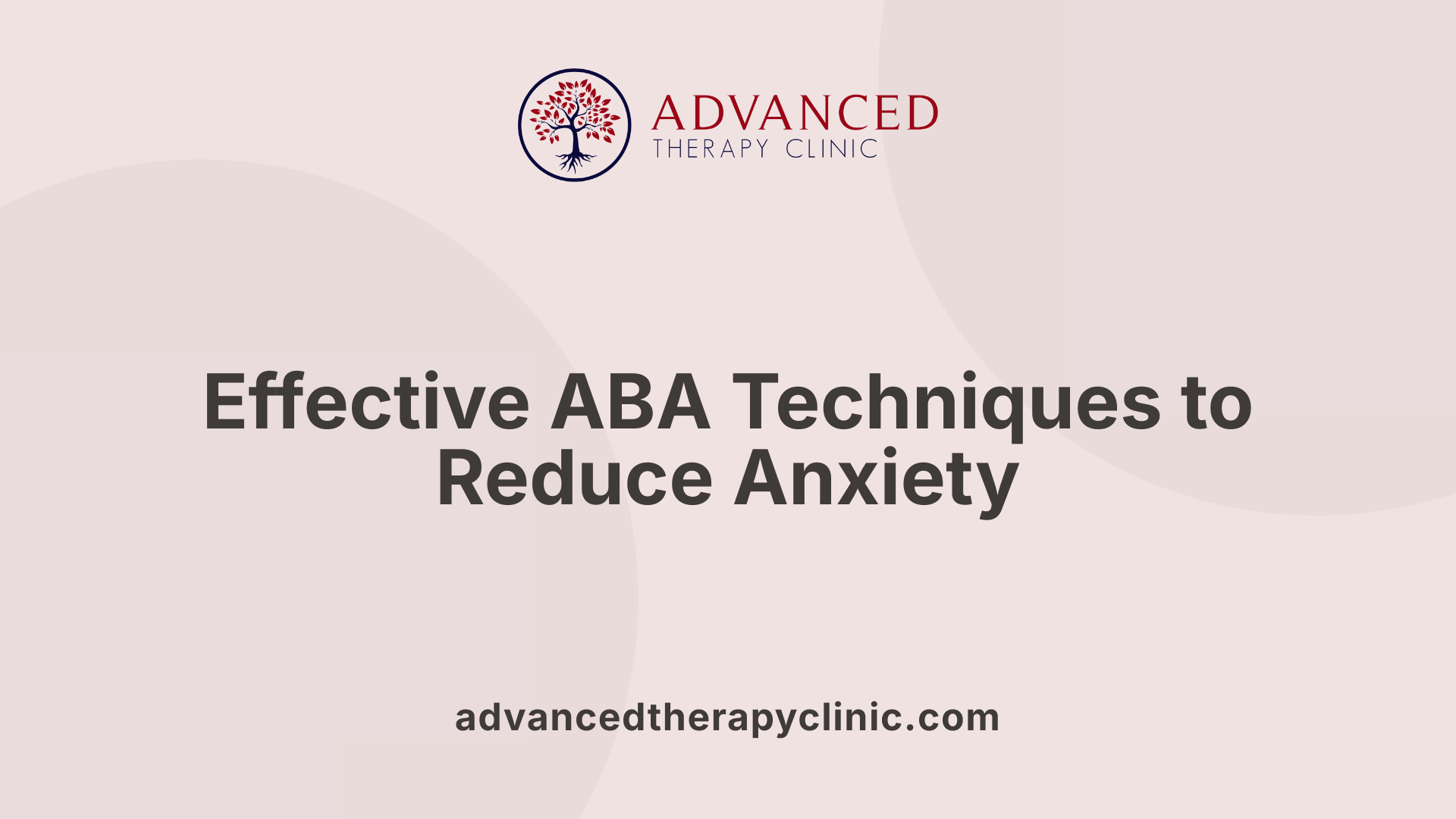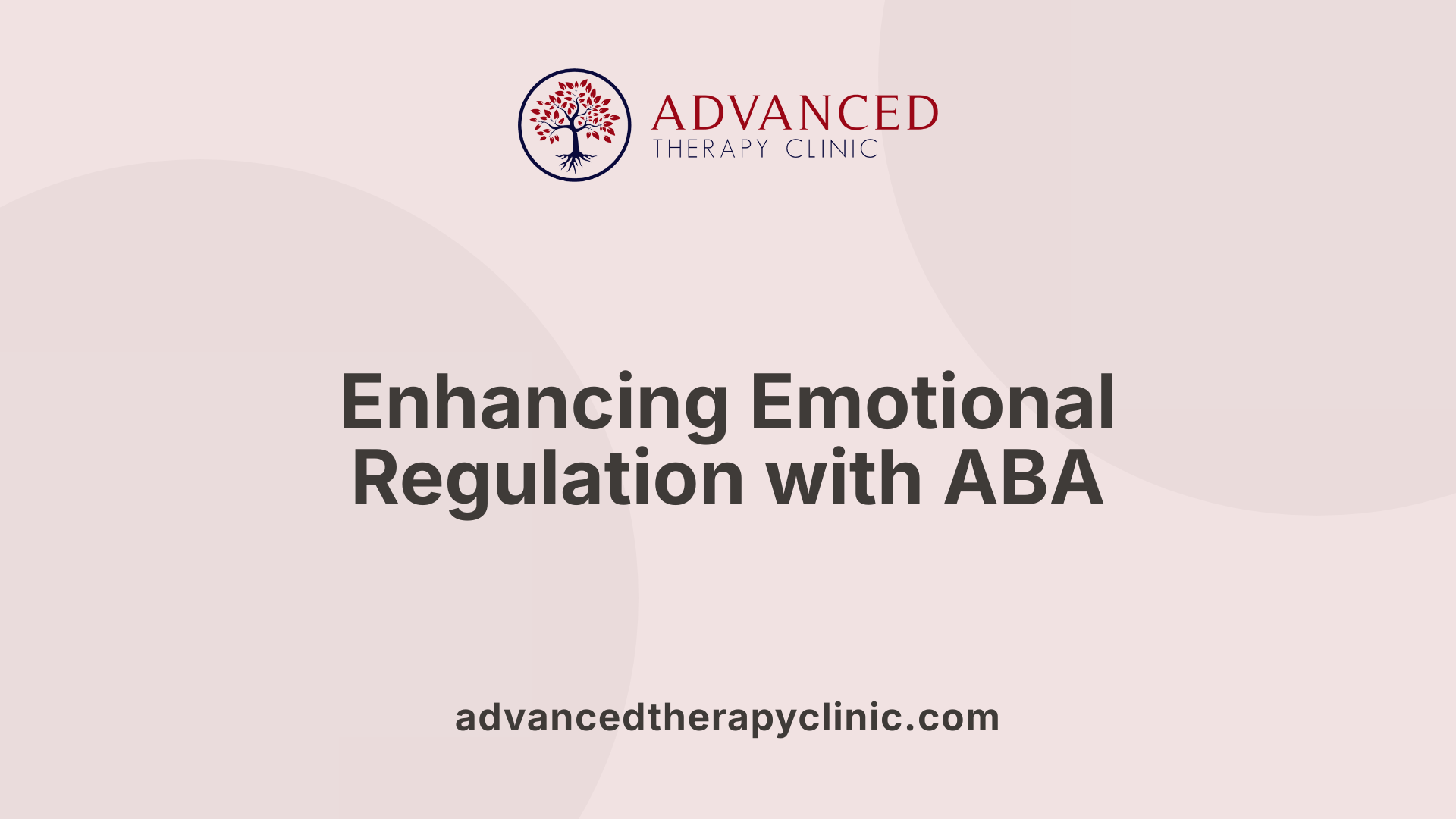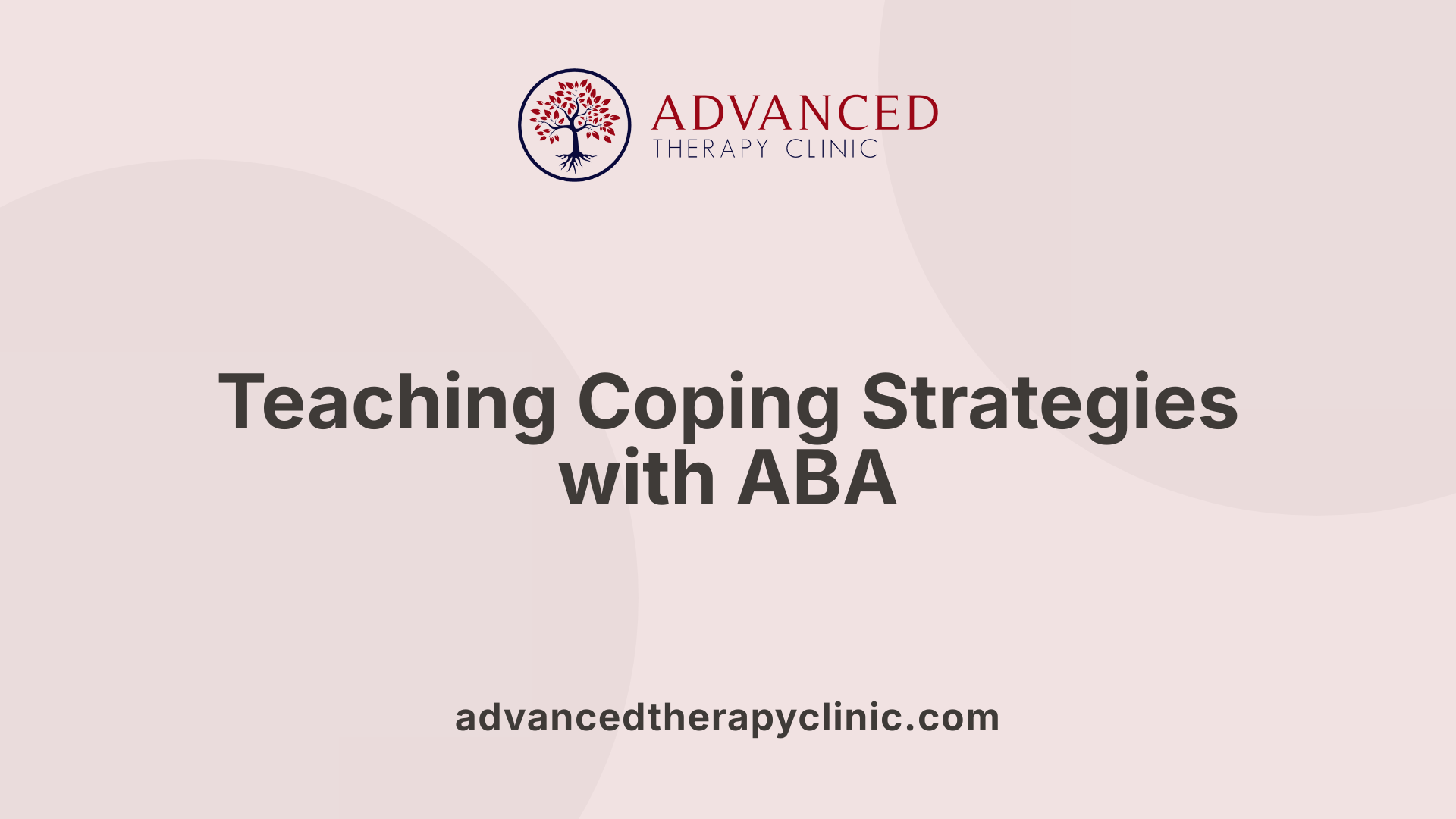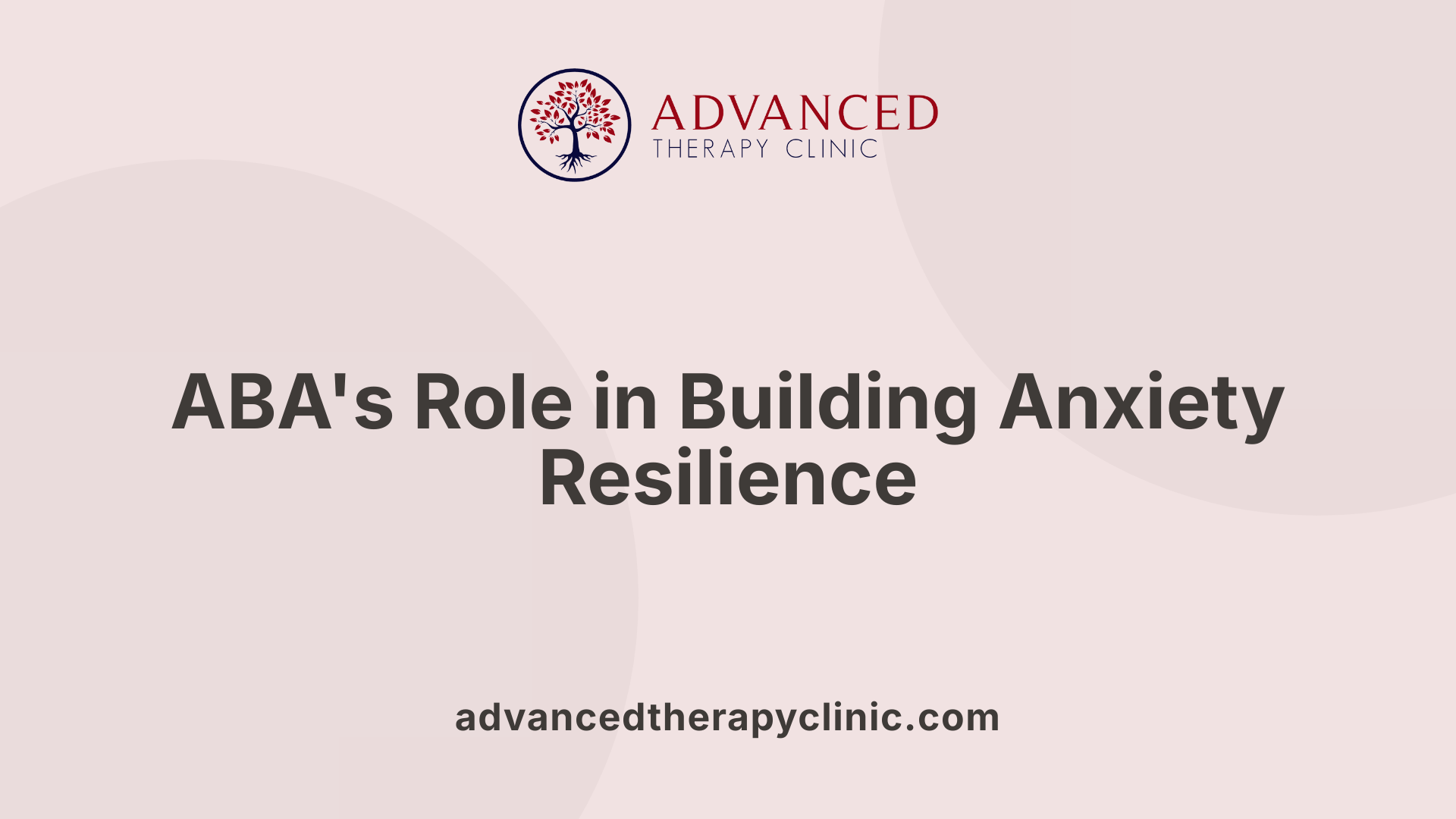How ABA Therapy Teaches Coping Skills for Anxiety


Understanding the Role of ABA in Anxiety Management
Applied Behavior Analysis (ABA) is a widely employed therapeutic approach that systematically helps children with autism and related developmental delays develop essential coping skills to manage anxiety. By focusing on individualized behavioral interventions, ABA addresses triggers, promotes emotional awareness, and teaches adaptive responses. This article explores how ABA therapy works to instill effective coping mechanisms, the strategies involved, and its overall impact on emotional regulation in children and adults with autism.
How ABA Therapy Facilitates Learning of Coping Skills for Anxiety

How does ABA therapy help teach coping skills for anxiety?
Applied Behavior Analysis (ABA) therapy provides a structured approach to helping individuals with anxiety develop effective coping skills. It begins with careful behavior analysis to identify specific anxiety triggers unique to each person. By understanding these triggers, therapists can tailor interventions that target the root causes of anxiety.
ABA employs several techniques to promote emotional regulation. Positive reinforcement encourages desired responses when individuals practice coping strategies, reinforcing their use. Gradual exposure, or systematic desensitization, allows individuals to confront anxiety-provoking situations in a controlled manner, reducing avoidance and building resilience.
Relaxation strategies such as deep breathing or the use of calming tools are integrated into sessions to help manage immediate anxiety responses. Visual supports like social stories or emotion charts serve as cues to recognize and respond appropriately to feelings. Role-playing scenarios provide safe environments for practicing coping skills, helping individuals generalize these techniques to real-life situations.
Involving caregivers and family members is vital. They reinforce learning and ensure consistency across different environments. By training caregivers to implement strategies at home, ABA ensures that behavioral changes are supported and maintained.
Overall, ABA's individualized, structured approach fosters resilience and emotional well-being. It helps individuals recognize their internal and external anxiety triggers, learn adaptive responses, and decrease avoidance behaviors, leading to more effective management of anxiety symptoms.
Key Strategies in ABA for Anxiety Reduction
 ABA therapy offers a variety of approaches aimed at helping individuals with autism reduce anxiety and develop adaptive coping skills. Central to these strategies are teaching relaxation techniques that promote calming responses. Skills such as deep breathing exercises, visualization, and progressive muscle relaxation are introduced to help individuals manage immediate stress.
ABA therapy offers a variety of approaches aimed at helping individuals with autism reduce anxiety and develop adaptive coping skills. Central to these strategies are teaching relaxation techniques that promote calming responses. Skills such as deep breathing exercises, visualization, and progressive muscle relaxation are introduced to help individuals manage immediate stress.
Systematic desensitization plays a vital role in addressing phobias or specific anxiety triggers. This process involves gradually exposing the individual to anxiety-provoking stimuli in a controlled environment, paired with calming techniques to diminish fear responses over time.
Behavioral activation encourages engagement in activities that may be avoided due to anxiety. By reinforcing participation in feared or challenging situations, individuals learn to confront their fears incrementally, which can reduce avoidance behaviors.
Visual aids and social stories serve as effective tools to help understand and manage anxiety. Visual supports clarify expectations and routines, reducing uncertainty that can trigger anxiety. Social stories narrate specific scenarios, preparing individuals for upcoming events and easing transitions.
Family involvement is crucial for the generalization of skills learned in therapy. Training caregivers to implement strategies, reinforce progress, and support emotional regulation at home ensures consistency and strengthens coping mechanisms.
| Strategy | Description | Additional Notes |
|---|---|---|
| Relaxation skills | Deep breathing, visualization, muscle relaxation | Help regulate physiological responses to stress |
| Systematic desensitization | Gradual exposure to anxiety triggers | Reduces phobia responses |
| Behavioral activation | Encouraging participation in feared activities | Builds confidence and reduces avoidance |
| Visual supports | Feelings charts, social stories | Clarify emotional states and social expectations |
| Family involvement | Caregiver training and support | Promotes generalization and consistency |
These approaches, tailored to individual needs, are often combined to create an effective treatment plan. Regular monitoring and adjustment help ensure progress and support emotional well-being.
Developing Emotional Regulation Skills via ABA

How does ABA therapy support emotional regulation development?
Applied Behavior Analysis (ABA) offers effective strategies to help children develop emotional regulation. Central to ABA's approach is teaching children to recognize and label their emotions using visual tools such as emotion charts or color-coded systems like stoplights. These visual aids serve as accessible references that reinforce understanding and awareness of feelings.
Role-playing exercises form another core component. In these scenarios, children practice appropriate responses to various emotional situations in a safe, controlled environment. This method allows them to rehearse coping techniques, such as asking for a break or using calming strategies, which can be transferred to real-world settings.
Functional Communication Training (FCT) is incorporated to enhance expressive abilities. FCT helps children learn to communicate their feelings effectively, reducing frustration that might otherwise lead to challenging behaviors. This training involves teaching words, gestures, or alternative communication methods, such as picture exchange systems, to express emotional needs.
Teaching calming techniques is also vital. Deep breathing exercises, squeezing stress balls, or requesting time in a quiet space help children manage intense emotions. Consistent reinforcement and practice ensure these methods become habitual responses.
ABA emphasizes systematically identifying emotional triggers—situations or stimuli that provoke strong feelings—and practicing new responses to them. By gradually exposing children to these triggers and guiding them through alternative reactions, ABA fosters greater self-awareness and control over emotional responses.
Parent training programs complement therapy by teaching caregivers to recognize emotional cues and reinforce skills at home and in everyday routines. This consistent practice supports generalization, ensuring children can regulate emotions across multiple environments.
In summary, ABA therapy integrates visual aids, role-playing, communication skills, and behavior modification techniques to bolster emotional regulation. These strategies lead to improved self-control, decreased emotional outbursts, and better overall emotional understanding.
Teaching Coping Mechanisms with ABA Techniques

What methods does ABA therapy use to teach coping mechanisms to children with anxiety?
Applied Behavior Analysis (ABA) employs various strategies to help children develop effective coping skills, especially those dealing with anxiety. One essential approach involves modeling positive behaviors, such as practicing deep breathing or requesting a break, to show children ways they can manage stress.
Prompting and reinforcement are also fundamental. Therapists guide children through desired behaviors and reward their efforts and successes. This reinforcement encourages the repetition of coping strategies like using calm-down areas or engaging in sensory activities.
To understand each child's unique triggers, professionals often conduct assessments like Functional Behavior Assessments (FBAs). These evaluations help identify specific situations that cause anxiety and tailor interventions accordingly.
Visual supports are heavily integrated into ABA plans. Tools such as visual schedules and social stories prepare children for upcoming activities and reduce uncertainty, which can lessen anxiety. Sensory activities, such as squeezing stress balls or using weighted blankets, provide calming regulation.
An effective technique included in ABA is Functional Communication Training (FCT). FCT teaches children to express their feelings and needs clearly, which can prevent emotional outbursts stemming from frustration or anxiety.
Gradual exposure to anxiety-provoking situations is another critical element. By slowly introducing children to challenging scenarios in a controlled way, they learn to cope without feeling overwhelmed. Parental involvement through training ensures that these coping skills are reinforced consistently across different settings.
Below is a summary of common ABA-based coping strategies:
| Strategy | Description | Purpose |
|---|---|---|
| Modeling | Demonstrating desired coping behaviors | Learning by imitation |
| Prompting | Guided cues to encourage behavior | Initiating coping responses |
| Reinforcement | Rewards for successful coping | Encouraging repetition |
| FBAs | Identifying individual triggers | Personalizing interventions |
| Visual Supports | Schedules and social stories | Reducing uncertainty |
| Sensory Activities | Stress balls, weighted blankets | Calming the nervous system |
| FCT | Expressing feelings effectively | Reducing frustration |
| Gradual Exposure | Step-by-step challenges | Building resilience |
| Parent Training | Educating caregivers | Consistent skill application |
Using these approaches, ABA therapy provides a structured, supportive environment for children to learn and practice coping skills that can significantly improve their ability to handle anxiety in various settings.
The Role of ABA in Developing Anxiety Management Skills

How does ABA therapy assist in helping individuals develop anxiety management skills?
Applied Behavior Analysis (ABA) is a widely used approach for teaching anxiety management skills to individuals with autism. It focuses on systematically teaching and reinforcing positive behaviors, particularly coping strategies that reduce anxiety.
ABA incorporates methods like behavioral activation and exposure therapy to help decrease avoidance behaviors. For example, through graduated exposure, individuals are gradually introduced to anxiety-inducing situations, which diminishes their fear response over time.
A crucial part of ABA involves functional assessments. These help identify specific triggers that cause anxiety, such as certain social situations or sensory experiences. Therapists then develop personalized treatment plans that target these triggers.
Visual supports, like pictures or schedules, are integrated into therapy to make coping strategies clearer. Parent involvement ensures that these techniques are reinforced at home and in various settings, promoting consistency.
Moreover, ABA includes elements of cognitive-behavioral therapy (CBT), such as teaching individuals to recognize negative thoughts and replace them with more positive, calming ones. Desensitization plays a role here, gradually reducing sensitivity to anxiety-provoking stimuli.
Overall, ABA's structured and data-driven approach enables learners to develop effective coping skills. This structured teaching not only reduces anxiety symptoms but also enhances social interactions and independence.
| Aspect of ABA Approach | Techniques Used | Objectives | Additional Details |
|---|---|---|---|
| Relaxation & Mindfulness | Deep breathing, self-reinforcement | Calming and focus | Embedded in daily routines |
| Systematic Desensitization | Gradual exposure | Reduce phobias | Customized to individual triggers |
| Behavioral Activation | Reinforcing engagement in activities | Combats avoidance | Increases positive experiences |
| Trigger Identification | Functional assessments | Understand anxiety sources | Data collection for tailoring plans |
| Visual & Parent Supports | Visual schedules, parent training | Promote consistency | Facilitate transfer of skills |
| Cognitive-Behavioral Elements | Cognitive restructuring, role-playing | Change negative thought patterns | Integrated within ABA sessions |
This comprehensive approach ensures that individuals learn to recognize their anxiety triggers, employ calming techniques, and generalize these skills across different environments, leading to better emotional regulation and overall well-being.
Connection Between ABA and Teaching Anxiety Coping Skills

How is ABA therapy connected to teaching anxiety coping skills?
Applied Behavior Analysis (ABA) offers a structured and systematic approach to help children with autism develop essential coping skills for managing anxiety. By focusing on positive reinforcement, ABA encourages the repetition of desirable behaviors that promote emotional regulation.
Through techniques such as visual schedules, social stories, and modeling, ABA helps children recognize sensory sensitivities and social challenges that may cause anxiety. These tools provide clear, concrete examples of how to respond to various situations, making abstract emotions more understandable.
ABA also targets problematic behaviors linked to anxiety, such as avoidance or self-stimulatory actions. Therapists teach alternative coping strategies like deep breathing, using stress balls, or engaging in sensory activities, reinforcing these behaviors until they become habitual.
Consistent reinforcement fosters resilience and independence, enabling children to face new or challenging situations with greater confidence. By incorporating these skills into daily routines, ABA not only addresses immediate anxiety symptoms but also promotes long-term emotional well-being.
In essence, ABA serves as a comprehensive framework for integrating anxiety management into broader behavioral development. Its individualized, evidence-based methods effectively empower children with autism to navigate their emotions and reduce anxiety-triggering behaviors.
| Technique | Purpose | Additional Details |
|---|---|---|
| Visual aids | Recognize and understand emotions | Use of feelings charts and social stories |
| Modeling | Learn and imitate coping strategies | Demonstrating calm responses or deep breathing |
| Reinforcement | Promote desired behaviors | Providing praise or rewards for using coping skills |
| Addressing problematic behaviors | Reduce avoidance and escape | Teaching alternative responses such as sensory activities |
| Skill integration | Foster independence | Embedding coping skills into everyday routines |
How is ABA therapy connected to teaching anxiety coping skills?
| Aspect | Focus | Role in Anxiety Management |
|---|---|---|
| Reinforcement | Consistent positive feedback | Builds resilience and habit formation |
| Visual supports | Clear, predictable cues | Helps in understanding emotional states |
| Behavior modification | Address avoidance and agitation | Develops effective coping mechanisms |
| Generalization | Apply skills across environments | Promotes independence and reduces pervasive anxiety |
| Family involvement | Extend learning beyond therapy | Ensures consistent coping strategies at home and community |
ABA therapy’s structured approach, combined with visual supports and reinforcement, makes it a valuable tool in teaching children with autism how to manage anxiety. It encourages active participation, builds confidence, and fosters skills that support emotional health across settings.
Fostering Self-Regulation and Emotional Well-Being
ABA therapy, with its structured, individualized, and data-driven strategies, plays a pivotal role in equipping children and adults with autism to understand, manage, and cope with anxiety. Through visual supports, behavioral techniques, and caregiver involvement, ABA promotes resilience, reduces avoidance, and fosters emotional well-being. As research continues to evolve, integrating ABA with other therapeutic approaches enhances its effectiveness, ultimately supporting individuals in leading more confident and emotionally balanced lives.
References
- What is Emotional Regulation? Breaking Down the Basics ...
- Autism and anxiety in adults
- Treatment and Intervention for Autism Spectrum Disorder
- Applied Behavior Analysis in Treating Anxiety Disorders
- Applied Behavior Analysis in Treating Anxiety Disorders
- The Role of ABA Therapy in Managing Anxiety
- treatment of anxiety in individuals with autism spectrum ...
- Can ABA Therapy Help with Anxiety? In Many Cases, Yes
- Applied Behavior Analysis in Treating Anxiety Disorders
- Autism and Anxiety: Treatment Options and ABA Techniques
Recent articles

Expressive Speech Delay 2-Year-Old
Understanding and Addressing Expressive Speech Delay in Toddlers

How Speech Recognition Works
Unlocking the Power of Speech Recognition in Therapy and Healthcare

Autism and Head Size
Understanding the Complex Relationship Between Autism and Head Size

Occupational Therapy in Autism
Enhancing Independence and Quality of Life Through Occupational Therapy in Autism

Do Autistic People Understand Sarcasm?
Navigating the Nuances: Understanding Sarcasm and Social Communication in Autism

Autism Routines
Crafting Effective Daily Structures for Children with Autism

